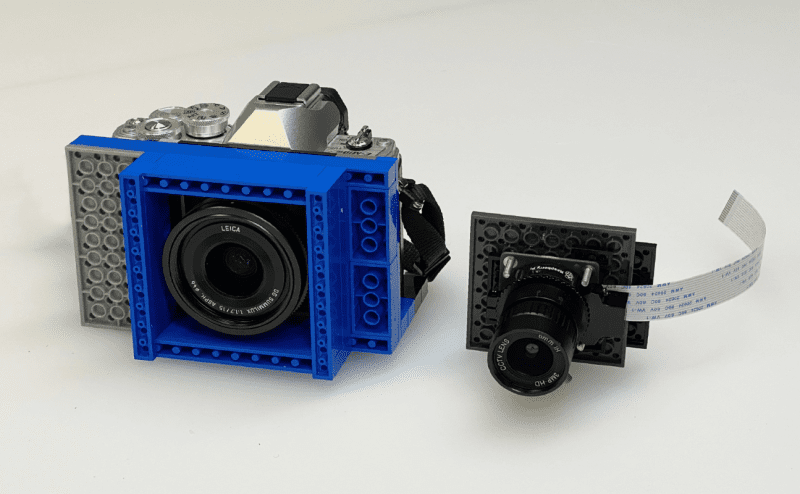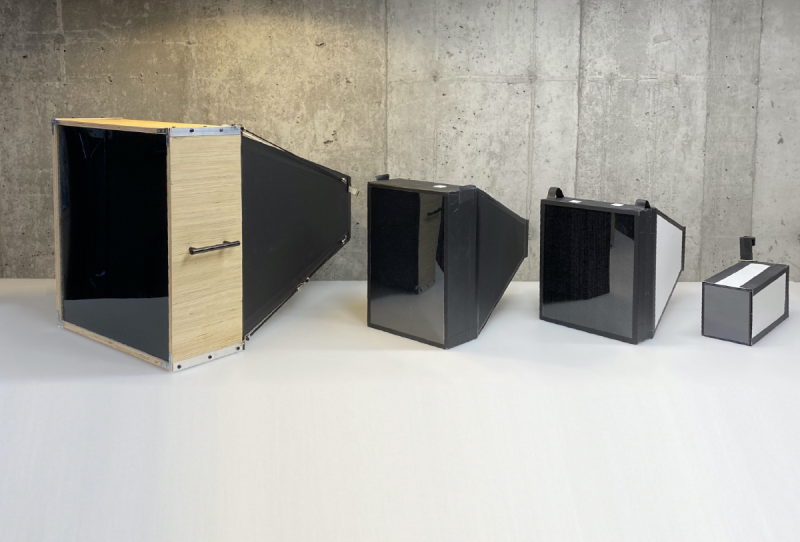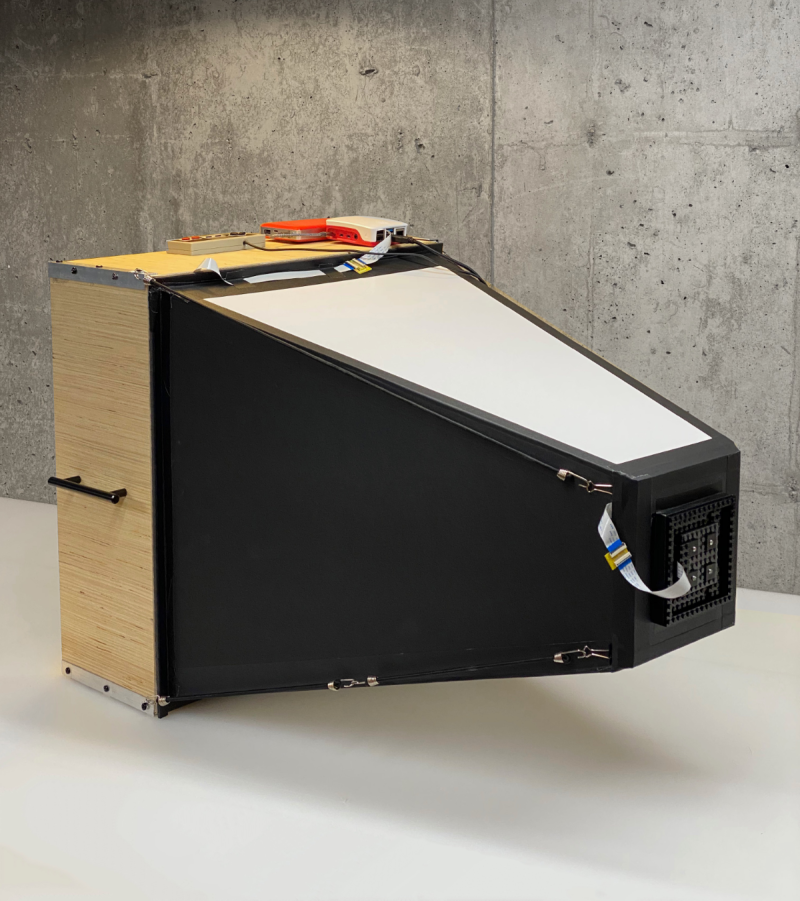“I’ve always loved pinhole cameras,” he tells us. “As I played with [them], I wondered if I
could create a camera with hundreds of holes instead of a single point of light. That little
idea virus took hold and eventually I found myself buying out Wal-Mart’s entire inventory of
straws to test the idea.”
He worked on the new camera for about a year, building three prototypes before arriving at
the final design. “It’s funny how ideas seem like they will work in your head, but then when
you build it in real life, things fail in unusual ways. For example, I went to great lengths to
find the right surface for the image to be projected on inside the camera. At one point I
debated destroying a large TV screen because I thought the matte glass of the TV was
what would work. In the end, the material that worked best was ordinary wax paper. You
just never know what will work until you experiment.”
Points of light
Adrian explains the basics of how the camera works: “Think of a straw as a telescope.
Look through it and you see a tiny part of the bigger picture. Stack thousands of straws
and all those points of light add up to make a bigger picture. To capture the picture, the
light from each straw lands on a semi-transparent surface inside the camera. I take a
picture of that projection to get the final image.”
Exposure times range from one to six seconds. “It’s a guessing game,” he says, “but the
Raspberry Pi gives me a rough preview. As far as focus, the closer things are to the
straws, the clearer they appear. Focusing comes down to getting as close to the subject as
I can.”
Adrian reveals that when he heard about the new High Quality Camera earlier this year, he
knew he had to try it. “I’ve always wanted to build my own digital camera. Old film cameras
are easy to take apart and modify, but digital cameras are black boxes. Until Raspberry
Pi’s High Quality Camera, it has been virtually impossible to build your own digital camera.
Now the sky’s the limit.”
A Lego mount enables easy attachment of the Raspberry Pi HQ Camera to any of the
prototypes. “Once I screwed the 6mm Raspberry Pi lens to a 6×6 lego brick it made it
easier to play with,” he says. “Lego is a quick and easy way to hold things in place as you
are prototyping.”
Public display
The public reaction to the camera has been very positive. “People’s first response is
skepticism because it sounds like such a strange thing,” says Adrian. “But when they see
the images it creates, they are won over. They realise it isn’t a gimmick, it’s a way to create
images that are unlike anything else. And now that I am developing a following on
Instagram (@ade3), it is rewarding to get kudos from people outside my small circle of
friends and family.”
The camera is ideal for portraits and eventually he wants to have a show where it can be
in the gallery alongside the portraits taken with it. “Right now the camera still requires me
to be very hands-on, but eventually I think I can to get it to a point where anyone could
walk up to the camera and take a selfie. I like the idea of the camera existing on its own
without me being there to operate it.”





